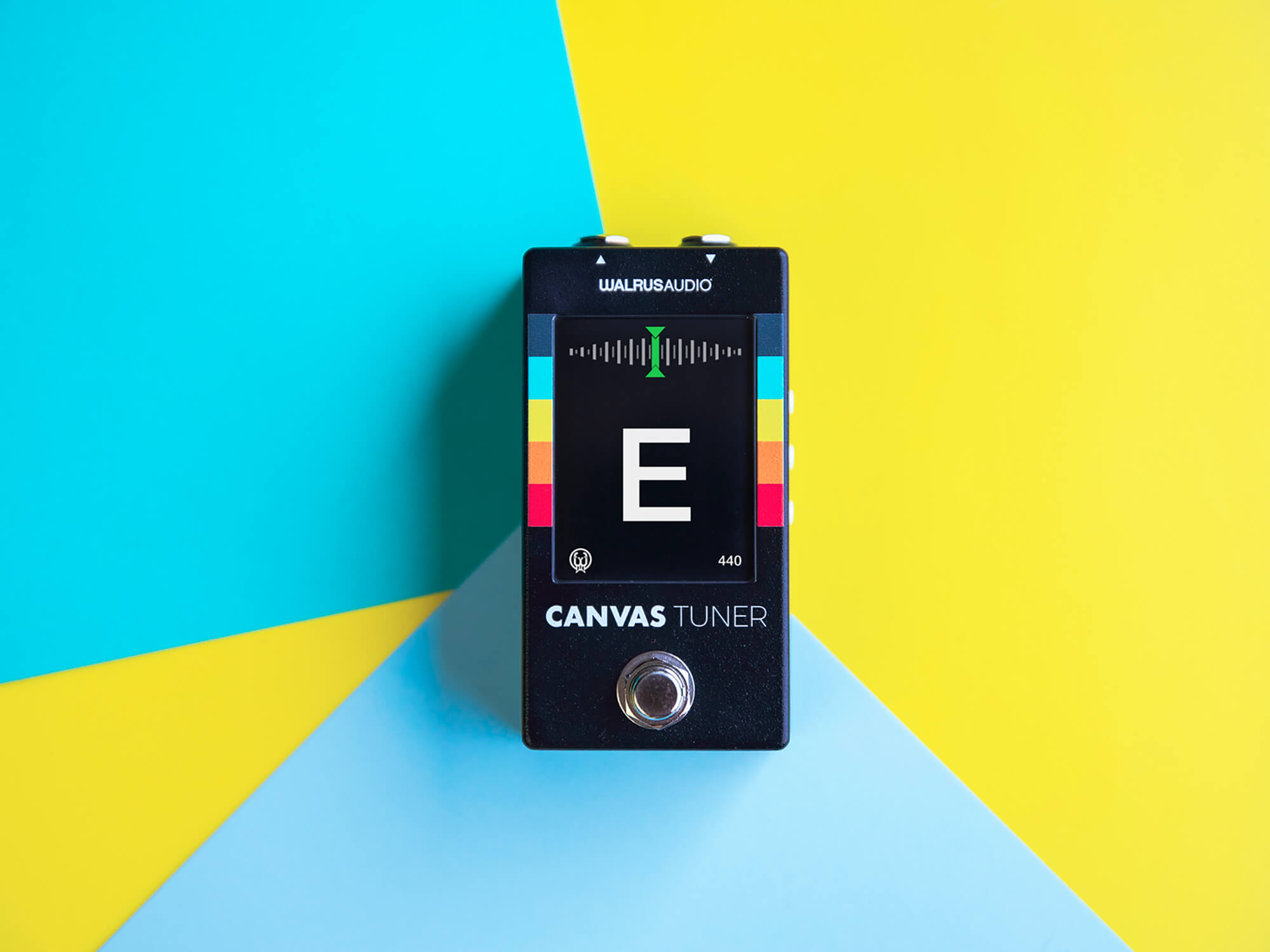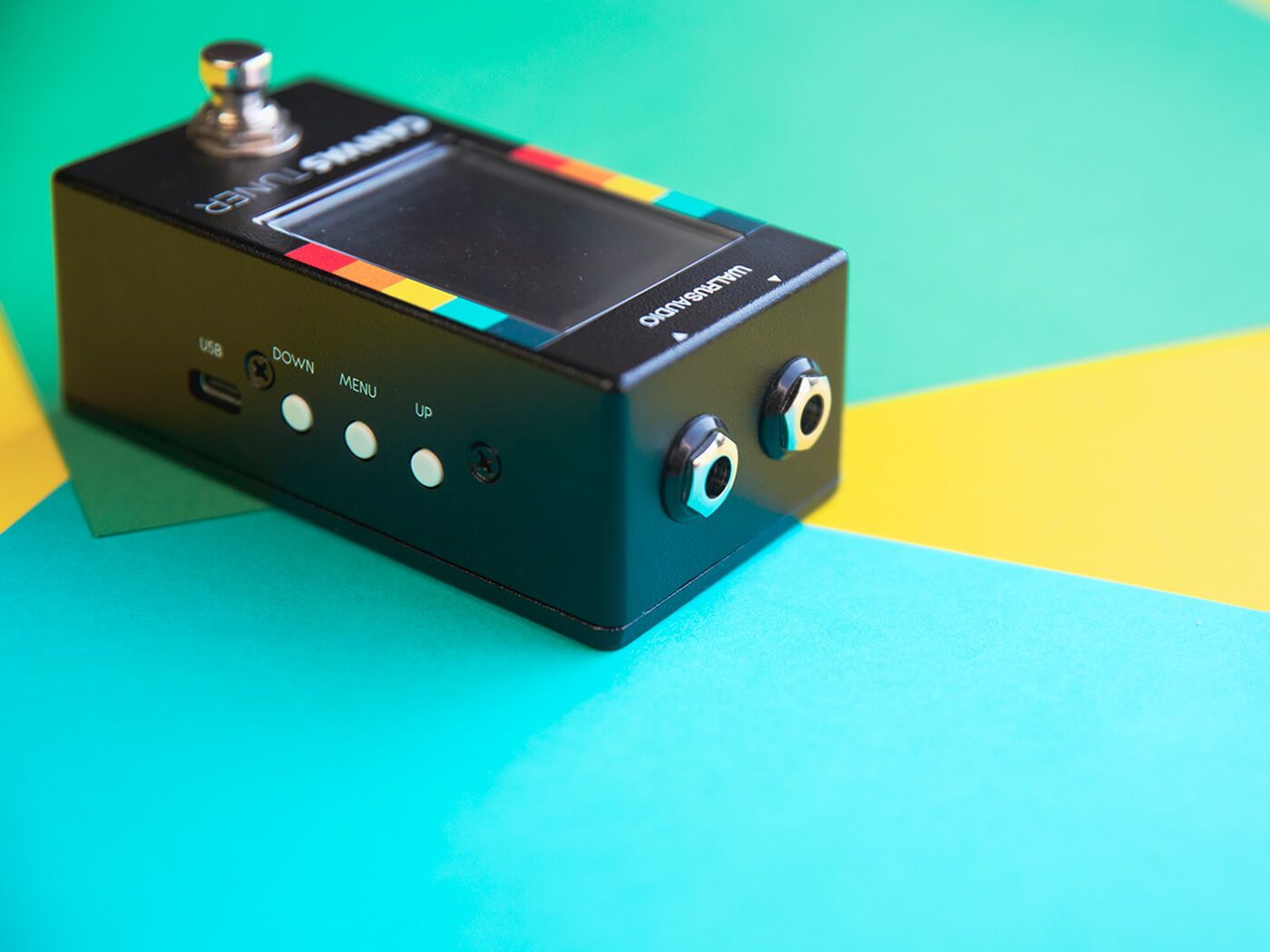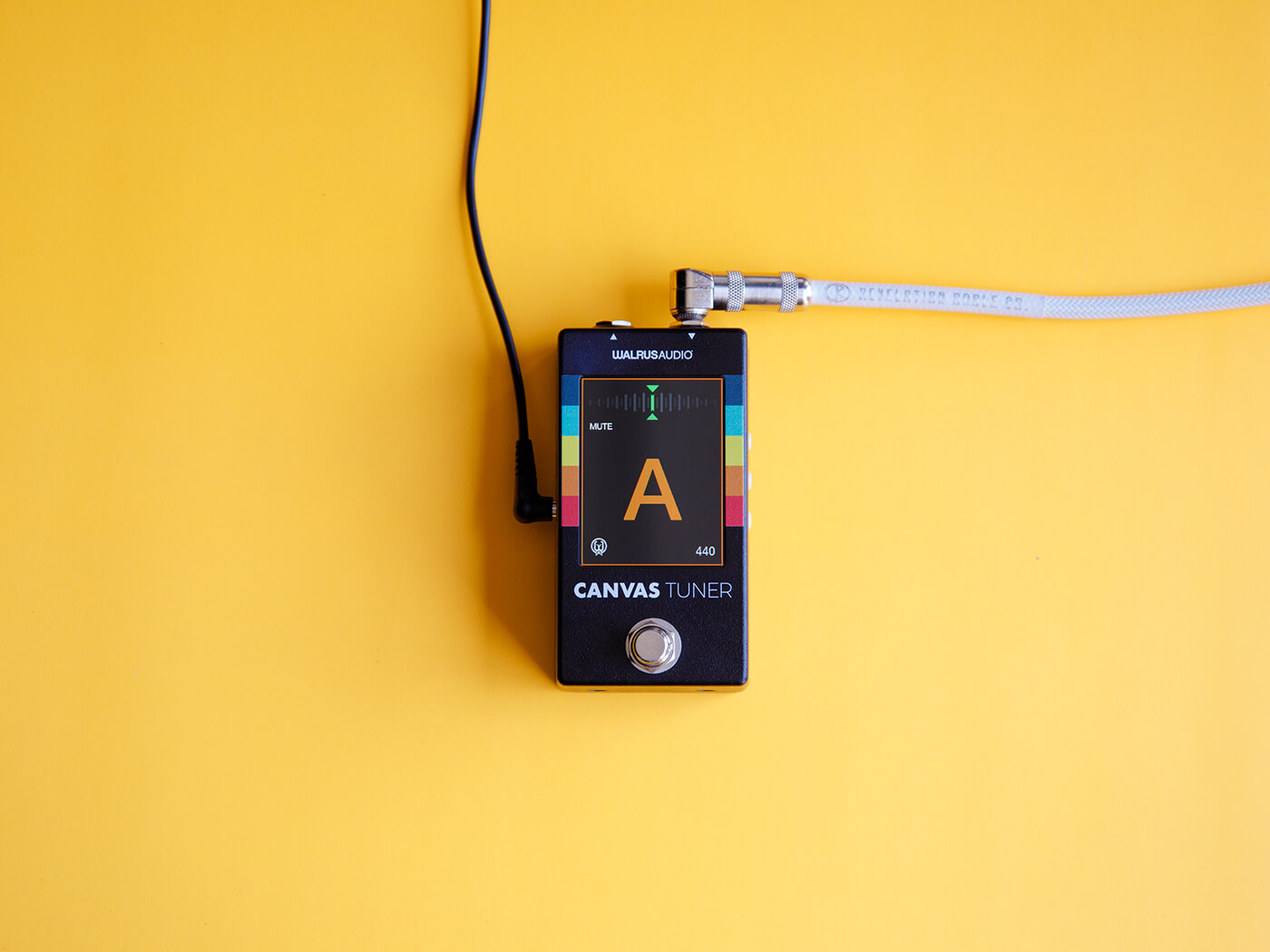Walrus Audio Canvas Tuner review: it might not be the tuner you need, but it’s the tuner you want
Boutique pedal brand Walrus Audio has thrown its hat into the under-served world of floor-based tuners – but is this more than just a fun gimmick?

Walrus Audio Canvas Tuner
Review Overview
Our rating
8
Our verdict
$148/£143, walrusaudio.com
Tuners man, is there anything less sexy than a tuner? A DI box maybe, or an AB-Y switch? Other than that though, man, is it hard to get excited about a friggin’ new tuner. Which makes the hubbub surrounding Walrus Audio’s first ever tuner over the last few months all the more remarkable.
The Tuner is the latest addition to Walrus’ Canvas range of utility products that are united by two things – a fetching 70s-vibed rainbow-stripe colour scheme and the fact that people seem to get more excited about them than they would about similar units from less overtly ‘cool’ manufacturers.
Is the Walrus Canvas Tuner accurate?
Because ostensibly the core functionality is not a million miles away from what you would expect on any other modern tuner – +/-0.1 cent accuracy, strobe and needle modes, presets for alternate tunings, adjustable brightness, 20Hz to 20KHz frequency range and the option of true or buffered bypass… all for just a little more cash than most of its competitors from TC Electronic, Peterson, Boss and the like.
That might sound like I’m being negative about the Canvas Tuner from the start, dismissing the hype around them as merely the result of good PR and good marketing – but I’m not. The fact that people have got excited about the Canvas Tuner isn’t just good marketing – it’s about giving people the chance to make the thing their own.

What makes the Canvas Tuner unique?
Customisation is at the core of the Canvas Tuner, and if you’ve seen anyone posting about it online yet, you’ll already know about the biggest and most attention-grabbing part of it – the ability to upload an image of your choice to sit in the pedal’s full-colour LCD display in bypass mode.
A quick scroll through Instagram and you’ll see people using it to display pictures of their kids, their pets, their setlists, memes, words of affirmation… the only limit, it seems, is your imagination. It’s also a very simple process — plug your pedal into a laptop, visit the walrusaudio.io site on your web browser and upload your chosen image — et voila.
Is this just a silly gimmick? Of course! But it’s also one that is undeniably charming, and I would certainly find it hard-pressed to go back to not seeing the cat from the Woman Shouting At Cat Meme every time I look down at my board.
And in truth, this is just the most showy (and superfluous) part of the customisation options — the Canvas Tuner also lets you pick from eight colour themes and four different screen orientations, meaning you really can tailor the look and position of this pedal to fit perfectly into your board’s aesthetic and layout.

Walrus Canvas Tuner drawbacks?
There are a couple of flies in this otherwise very appealing package however, not least the price. At just shy of $150 it’s a fair whack more expensive than a PolyTune, TU-2 or PitchBlack, and a dollar less than a StroboStomp HD. That might not bear mentioning if it was everything its rivals were and more, but that’s not the case.
Unlike several of its competitors, there’s no option to use the Canvas Tuner to power any other pedals, as the StroboStomp and venerable TU-2 have done for years – a fact that’s made all the more galling by the fact that the Canvas is thirsty. Walrus’ recommended power requirement is a whopping 300mA – that’s the same as a Strymon BigSky! Given that most tuners require less than a third of that – a PolyTune Mini is 100mA, a TU-2 is 55mA and a StroboStomp is around 85mA – this is worth bearing in mind if you’re putting together a board where power is at a premium.
Also, while the top-mounted jacks are useful for saving space around your pedal, the side-mounted power socket and buttons to change any of the parameters negate this somewhat, because they’re placed exactly where the jacks would be on another pedal. It’s a minor issue admittedly, but I instantly discovered that the side-mounted jack of my fuzz pedal meant that i had to lift the Canvas Tuner off my board if I wanted to change any of the tuner’s parameters – in practice I’ve not needed it much, but if you use a load of different tunings this could be a royal pain in the ass.

Is the Canvas Tuner worth it?
Ultimately though, the above drawbacks are sensible concerns for sensible people – and ultimately if you just want to buy a tuner for its sheer utility and usefulness, you probably wouldn’t be buying the Canvas Tuner anyway. There are tuners that will tune more accurately, offer more useful features, take up less space and drink less power out there for significantly less money.
But we’re far past that now, aren’t we? In a world where guitarists genuinely care about the aesthetics of the cable routing underneath their boards, the idea that pedals are simply utilitarian boxes there to fulfil their stated function in the most efficient way possible is laughable.
Pedals are fun – and so is the Canvas Tuner. That’s its USP, and while it might seem frivolous or pointless to some people, to the rest of us that’s the magic of it all. No other tuner can make you smile, and that isn’t nothing.

Walrus Audio Canvas Tuner alternatives
- Ernie Ball VPJR Tuner ($219)
- Boss TU-3W ($169)
- Peterson StroboStomp HD ($149)




